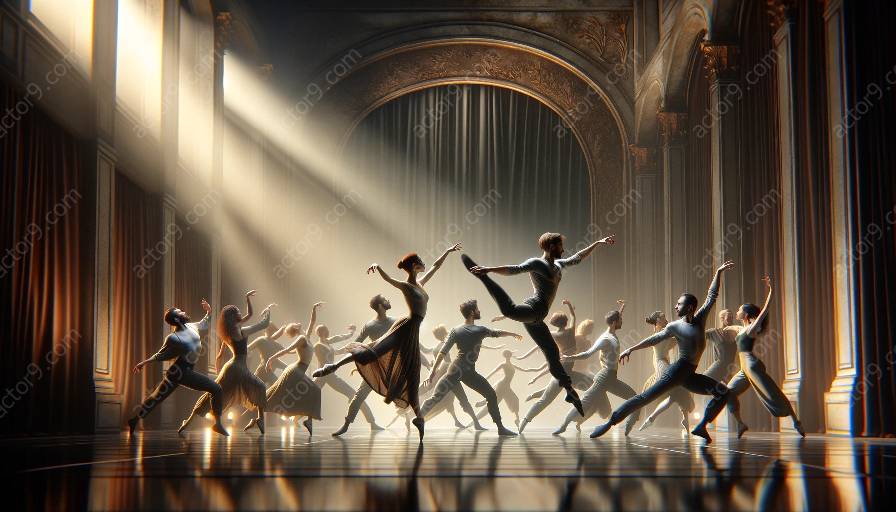Understanding the physicality of specific character types and archetypes is essential in the realm of acting and performance. This topic delves into the nuances of body movement, gestures, and expressions that help bring characters to life on stage or screen.
Introduction:
Acting is not solely about delivering lines and emoting; it's equally about embodying the essence of the character physically. The physicality of a character encompasses their body language, movement patterns, gestures, posture, and overall presence. In this context, examining character types and archetypes through the lens of Laban Movement Analysis provides a deeper understanding of how movement aligns with specific roles and personality traits.
Laban Movement Analysis:
Laban Movement Analysis (LMA) is a framework for understanding, observing, and analyzing movement. It categorizes movement into four components: Body, Effort, Shape, and Space. When applied to acting, LMA provides actors with a systematic approach to developing and embodying the physicality of their characters. By utilizing Laban's vocabulary of movement qualities, actors can explore how each character type or archetype may exhibit distinct movement patterns and qualities.
Body:
The Body component in LMA focuses on the physical form, including elements such as tension, relaxation, weight, and shape. Different character types may manifest varying degrees of tension or relaxation in their movements, reflecting their inner emotional states and personality traits. For example, a powerful and authoritative character might exhibit greater muscular tension and a commanding physical presence, while a timid and fragile character may display more subdued and delicate movements.
Effort:
Effort refers to the dynamics of movement, encompassing qualities such as strong/light, direct/indirect, sustained/sudden, and bound/free. Through the lens of acting techniques, the application of effort qualities can convey a character's intentions, emotions, and interactions. For instance, a villainous archetype might employ strong, direct movements with abrupt shifts, conveying a sense of dominance and unpredictability, whereas a nurturing archetype might engage in gentle, sustained movements that exude warmth and comfort.
Shape:
Shape relates to the configurations and gestures formed by the body in motion. It encompasses qualities such as tense/release, direct/indirect, and twisted/aligned. Understanding shape in the context of character physicality allows actors to embody the distinctive mannerisms and idiosyncrasies of specific character types and archetypes. For instance, a comedic archetype may exhibit exaggerated, playful shapes and gestures, while a tragic archetype may embody angular, contorted shapes that reflect inner turmoil and anguish.
Space:
The Space component explores how movement relates to the surrounding environment, encompassing dimensions such as direct/indirect, personal/general, and high/low. By incorporating spatial considerations into the physicality of characters, actors can convey their character's relationship to the world around them. For example, a regal archetype might exude an expansive, commanding presence that dominates the space, while a dejected archetype may shrink into a confined, withdrawn space, reflecting their inner desolation and isolation.
Character Types and Archetypes:
Delving into specific character types and archetypes within the realm of acting is crucial for developing a comprehensive understanding of the physicality associated with each role. Character types encompass a broad spectrum of personalities, behaviors, and motivations, while archetypes represent universal, symbolic patterns that resonate across cultures and narratives. When applying Laban Movement Analysis to character types and archetypes, actors can discern how movement aligns with the unique traits and attributes of each persona.
Character Types:
Character types encompass a diverse array of roles, each with distinct physical and psychological characteristics. These types may include heroes, villains, comedic characters, tragic figures, mentors, and more. By analyzing character types through the lens of physicality, actors gain insights into how movement can encapsulate the essence of these roles, amplifying their portrayal on stage or screen.
Archetypes:
Archetypes, stemming from the work of Carl Jung, represent recurring symbols and motifs that transcend individual cultures and eras. Common archetypes include the hero, the shadow, the mentor, the trickster, the lover, and others. Understanding the physicality associated with archetypes allows actors to embody these universal patterns in a compelling and authentic manner, tapping into the collective subconscious resonance that archetypal characters evoke.
Integrating Laban Movement Analysis with Acting Techniques:
Combining the principles of Laban Movement Analysis with established acting techniques enhances an actor's ability to manifest the physicality of specific character types and archetypes. By integrating these methodologies, actors can cultivate a nuanced, embodied portrayal of their characters, elevating the authenticity and impact of their performances.
Method Acting:
The renowned acting technique of Method Acting encourages actors to immerse themselves in the psychological and emotional aspects of their characters, aiming for a realistic and deeply felt portrayal. When coupled with Laban Movement Analysis, Method Acting enables performers to weave their character's movement patterns and physical traits seamlessly into their emotional and psychological exploration, fostering a holistic embodiment of the role.
Mime and Physical Theatre:
Mime and Physical Theatre techniques emphasize the use of the body as the primary mode of expression, relying on gesture, movement, and physicality to convey narratives and emotions. By aligning these techniques with Laban Movement Analysis, actors can refine their physical storytelling, harnessing precise movement qualities and shapes to vividly communicate the essence of specific character types and archetypes without the reliance on spoken words.
Viewpoints Technique:
The Viewpoints Technique, rooted in postmodern dance and improvisational theatre, focuses on the spatial and kinetic aspects of performance, exploring elements such as tempo, duration, kinesthetic response, and spatial relationships. When merged with Laban Movement Analysis, the Viewpoints Technique empowers actors to inhabit character roles with heightened spatial awareness, dynamic presence, and a deep understanding of how their physicality influences their interactions within the performance space.
Conclusion:
The physicality of specific character types and archetypes not only enriches an actor's portrayal but also deepens the audience's engagement with the narrative. By understanding how movement aligns with character traits, motivations, and archetypal patterns, actors can breathe life into their roles with authenticity and depth, fostering a profound connection between the characters and the audience.













































